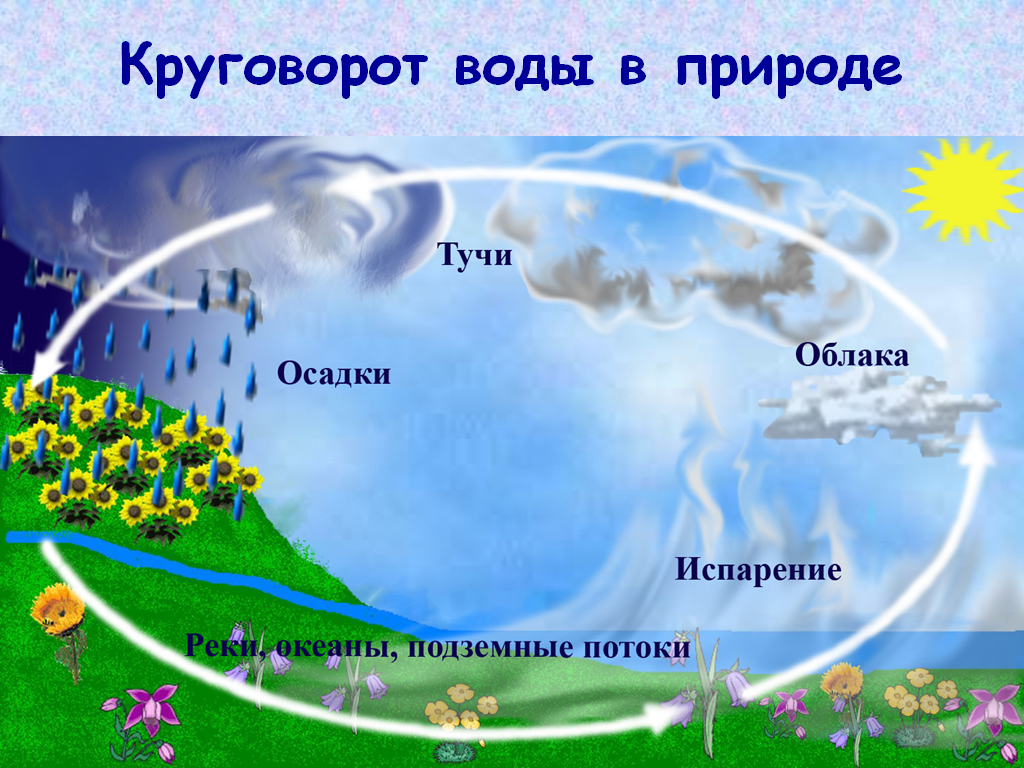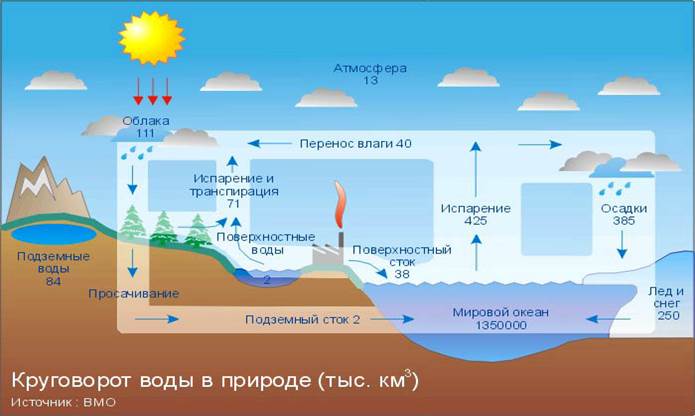On Earth, the following shells of the planet are distinguished:
1. Hydrosphere.
2. Lithosphere.
3. Atmosphere.
4. Biosphere.
Water in three states. Hydrosphere
Hydrosphere- the shell of the Earth, which includes all the water of the planet; water shell of the Earth.
Water on Earth exists in three states: liquid, solid and gaseous. Most water is in liquid form. There is no such place on our planet where there would be no water, even in deserts water is contained in the air in the form of water vapor.
Rice. 1. Water in three states
The composition of the hydrosphere
The hydrosphere includes:
1. Waters of the oceans.
2. Land waters (ice, rivers, lakes, groundwater, swamps, etc.).
3. Water in the atmosphere and living organisms.
The bulk of the water in the hydrosphere is contained in the World Ocean: oceans, seas, bays. It is mostly salt water. The waters of the World Ocean account for 96.6% of the entire hydrosphere. Most fresh water is found in glaciers and groundwater.

Rice. 2. Composition of the hydrosphere
The water cycle in nature
Water can move from one state to another, then to a third and back again. Due to this, the movement of water occurs - the cycle. The water cycle in nature the continuous process of movement of water from the surface of the ocean and land waters into the atmosphere, from the atmosphere to land, from land back to the ocean.
The water that evaporates from the surface is fresh; salt remains in the ocean. Thus, the salty ocean is the main source of fresh water. Thanks to the water cycle on Earth, life exists, land waters, climate, weather, soils are formed.

Rice. 3. The water cycle in nature

Rice. 4. The water cycle in numbers
Importance of the water cycle
Thanks to the water cycle on Earth, life exists, land waters, climate, weather, soils are formed. In addition, the water cycle connects all the shells of the Earth with each other, supporting their functioning.
Bibliography
Main
1. Initial course of geography: textbook. for 6 cells. general education institutions / T.P. Gerasimova, N.P. Neklyukov. – 10th ed., stereotype. – M.: Bustard, 2010. – 176 p.
2. Geography. Grade 6: atlas. – 3rd ed., stereotype. – M.: Bustard; DIK, 2011. - 32 p.
3. Geography. Grade 6: atlas. - 4th ed., stereotype. – M.: Bustard, DIK, 2013. – 32 p.
4. Geography. 6 cells: cont. Maps: M.: DIK, Drofa, 2012. - 16 p.
Encyclopedias, dictionaries, reference books and statistical collections
1. Geography. Modern illustrated encyclopedia / A.P. Gorkin - M.: Rosmen-Press, 2006. - 624 p.
Materials on the Internet
1. Federal Institute of Pedagogical Measurements ().
2. Russian Geographical Society ().
